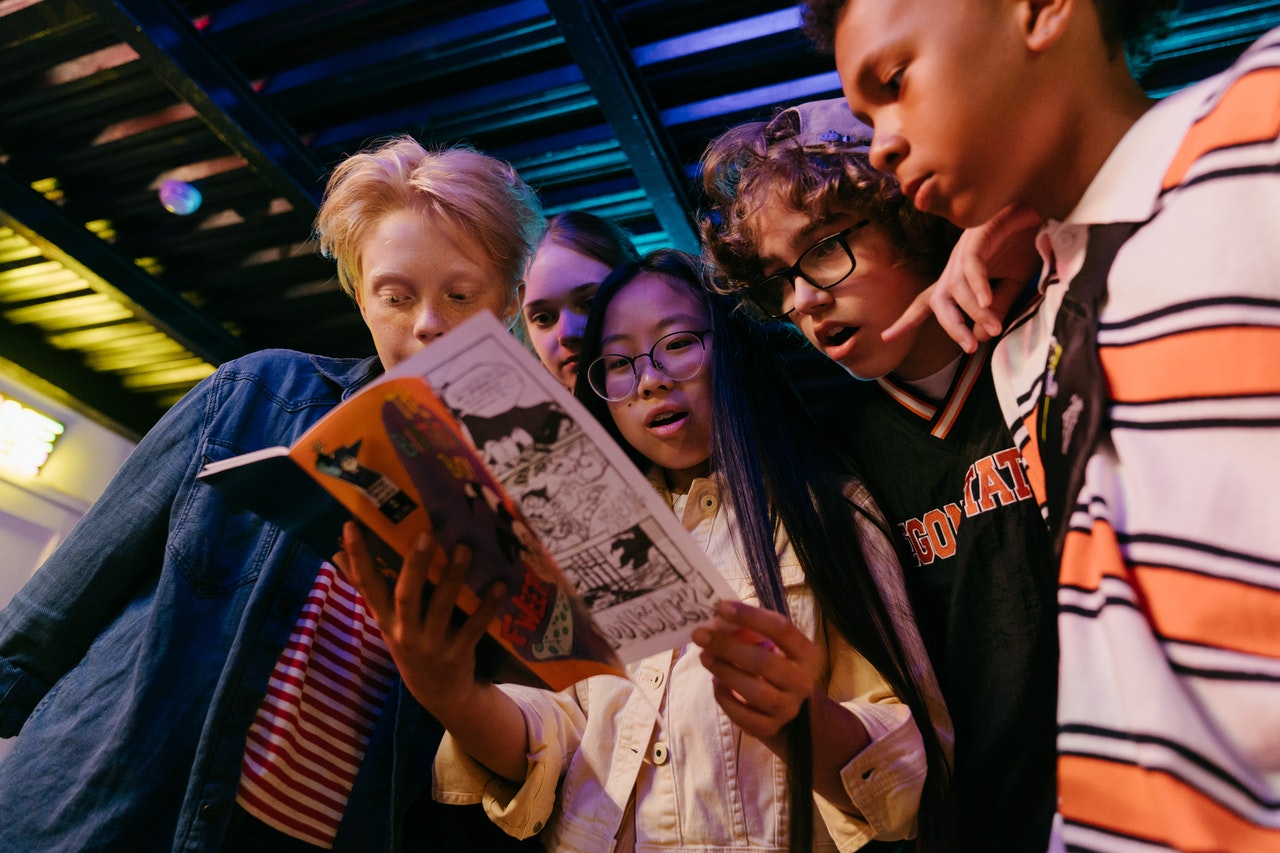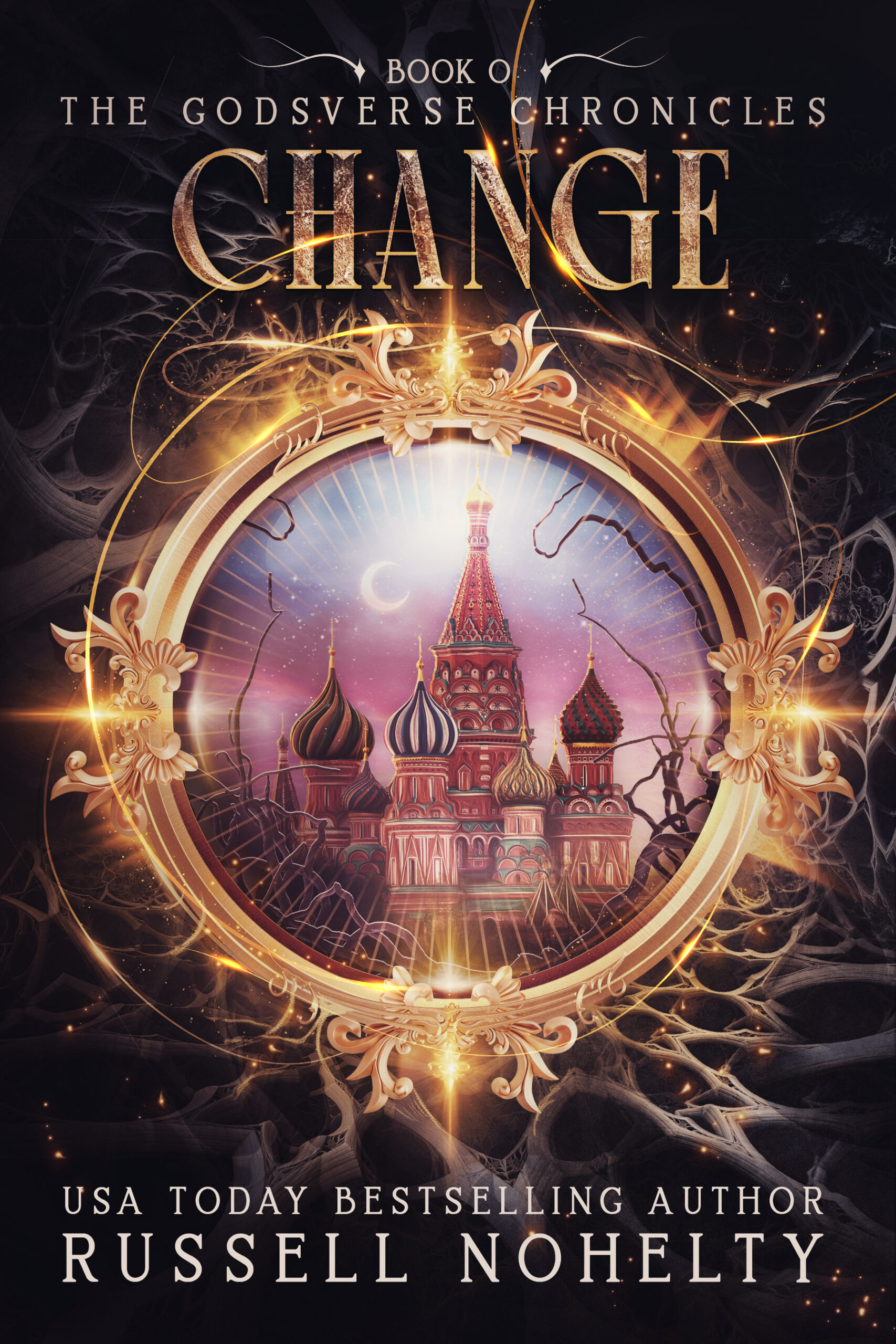People ask me for recommendations all the time, from artists to books to services, so I have compiled and listed them below. This is an incomplete list that I add to from time to time when I think of something new. However, I have tried to be diligent about it. I think it’s a pretty good list. Hope you agree and it answers your questions.
Please note, if somebody or something does not appear on this list, it does not mean they are/it is bad. It means I probably don’t have an opinion about them/it professionally. There are lots of people I know but haven’t worked with, and things I have heard about but haven’t used.
Or, it could mean I just forgot. I’ve been part of a lot of projects and used a lot of products in my time.
Long story short, please don’t be bitter if something/someone you love is not on this list. It might be that I don’t know them, haven’t used them, or never used/worked with them in a professional setting.
I have a neutral or no opinion on most things and people that exist.
Think I missed something? Let me know, email [email protected].
Artists:
I am only recommending artists I have personally worked with on projects. I also recommend every artist and writer from our Monsters and Other Shit and Cthulhu is Hard to Spell anthologies and everyone that did pin-ups in our books. I just decided to focus on cover artists and those who I have worked with on big projects for a long time. Otherwise, this would go on forever and it’s already super long.

- Renzo Podesta – Of all the artists I’ve worked with in my life, I’ve worked with Renzo the longest and on the most pages. He is the sole artist on Ichabod Jones: Monster Hunter, save for color assists, and I love him to death. He should get all the work.
- Juan Frigeri – One of the most successful artists I’ve ever worked with is Juan Frigeri, who got a job on Star Wars while we were making Katrina Hates the Dead, and has worked doing fill-ins for Marvel for years. He’s great, professional, on time, and has a great eye.
- Angela Oddling – I have worked with her so much. Not only did she do pin-ups for Katrina Hates the Dead and Pixie Dust, but she drew Lucifer Licorice, along with working with me on multiple anthology pieces. I adore her work.
- Nicolas Touris – Aside from Renzo, I’ve worked with Nic the most in my career. He not only drew Pixie Dust, but also the only non-Russell book Wannabe Press has ever published, I Can’t Stop Tooting. He has also contributed to multiple of our anthologies, and we have worked together on many, many anthology pieces. I cannot say enough good things about Nic’s work.
- Andrea Rosales – I worked with her on a graphic design project where she made a timeline and planet guide to the Godsverse Chronicles, and it was better than I imagined. She’s a great collaborator, and she also is a contributor to the Cthulhu is Hard to Spell anthology series.
- Kelsi Jo Silva – I have loved Kelsi’s work for a long time, before she was known for sexy sapphic pin-ups. I was lucky to work with Kelsi on some SFW pin-ups for the launch of The Obsidian Spindle Saga. She was every bit the dream collaborator I hope. She’s also contributed to our Cthulhu is Hard to Spell anthology project multiple times.
- Cammry Lapka – Cammry was my artist for Black Market Heroine, and she is so great. She’s fast and timely, along with being a lovely and pleasant human with immense talent. There have only been three artists who drew comics in the Godsverse, which should tell you how highly I think of her.
- Aaron Alexovich – Aaron’s book Serenity Rose is my favorite comic of all time. I love it so much, and so it was such an honor to have him do the covers for all our anthologies. He is such a giving collaborator, and I love his work so much.
- Walter Ostlie – I worked with Walter on a variant cover for Ichabod Jones: Monster Hunter #5, and he got my vision immediately, delivering exactly what I was going for. It was a pleasure to work with him, and he also contributed to a couple of our anthologies.
- Erik Lervold – I’ve known Erik since Wannabe Press carries The Red Calaveras (now The Red Skulls). We have worked together on every anthology piece Wannabe Press has published, and he is so great.
- Orlando Baez – This was the artist for The Little Bird and the Little Worm. He has a very cute style and worked fast. I don’t know if he does art anymore, but if he does, and you want a cute book done, you should reach out to him. I worked with him over a decade ago.
- Matthew Childers – Besides contributing to my anthologies, we worked together on two anthology pieces. HE also did some interior art for some Godsverse shorts, along with the covers for Akta’s First Hunt and Akta’s Ice Headache. Matthew is astute and precise, along with being very timely. He’s also just a great human.
- Bruno Chiroleu – I worked with Bruno a long time ago on Paradise, and while we only did one issue, our friendship has grown over the years. He manages a team of artists, including some others on this list, and is a great production manager, artist, and human.
- Nathan Lueth – Nathan has worked on most of our anthologies, and we did a piece together for the Charlie Foxtrot anthology. Nathan is always up for throwing down art for a good story, and his concepts are so great. He’s also just very pleasant and I always enjoy working with him.
- Claire Donague – Claire was the artist for my piece Down the Cthulhu Hole for the Cthulhu Invades Oz anthology, along with doing color work for Erik on my anthologies. Her work is so beautiful that I hope one day to work with her on a longer project.
- Antonios Christou – This is the only artist on the list that hired me to write for them. I worked with Antonios on two pieces in his Luminous Ages universe, and he’s such a giving contributor and enthusiastic. It rubs off on you.
- The Creative Paramita – Paramita is my main cover artist and did the covers for the entire Godsverse Chronicles and Obsidian Spindle series, along with dozens of my other books. I think she is a hidden gem, and the nicest person to deal with any time I reach out to her.
- Charmaine Ross – Charmaine did the non-fiction covers for my Complete Creative series. Unfortunately, I don’t think she does covers anymore because I can’t find her website. If you can find her, she’s great.
- Joel Rodriguez – Joel was the letterer of Black Market Heroine, and has saved my butt a few times with a quick lettering turnaround. He’s great.
- Thomas Bacon – Tom was the colorist on both Paradise and Katrina Hates the Dead. I’m not sure if he still does coloring work, but he was awesome to work with.
- Bernie Lee – Bernie was the letterer of Katrina Hates the Dead and some of projects. It has been a long time since I worked with him, but I enjoyed the experience.
- Dave Lentz – Dave has lettered several projects for our anthology series, but I worked with him specifically on a new logo for our Beehive app, and it was perfect. Loved it and love him.
- Nick Kremenek – Nick worked on our anthologies, but I’m recommending him because he makes the coolest challenge coins. If you need a coin, hire Nick to make it. Love his stuff.
- Psycat covers – I have loved Elona’s work for a long time, and I finally got a chance to get a couple covers from her for hardcover books this year. She is wonderful.
- JV Arts – I found this artist randomly, and I love their work. I bought eight covers for an upcoming series.
- Book Cover Gallery – This is not an artist per se, but my favorite group to find cover artists. There are many resources to find good comic artists, but very few to find good cover artists.
- If you are looking for comic artists, then the best group I have found is Connection Comic Book Writers and Artists on Facebook. You can also try DeviantArt, Artstation, Digital Webbing, and Pencillack, along with Reddit forums and Twitter often has portfolio days where you can find artists. The forums aren’t what they used to be at Digital Webbing and Penciljack, but I have found many artists through them. The best way, though, is through referrals from friends, and by picking up comics you like and then contacting the artists who made them.
Do not hire any artists who has not already completed at least one comic book issue you can review. Comics is very hard and most people who try it realize they hate it and that is how you lose artists after paying them.
The easiest way to prevent that is to ask to see previous work, and then ask them to produce a test page to see if their style matches what you are after. The right artist will get your vision and make it better than you ever thought possible.
You should spend an inordinate amount of time to find an artist, even if it takes years, because comics, and children’s books, are sold by the art. You will be committing to somebody for years, so do your diligence and find somebody that fits your vision. Of course, you should also read a lot of comics to understand whether your vision will be easy to achieve or hard.
Generally, cartoony styles like the ones I use are cheaper to produce than very realistic art like Alex Ross. That is because it just takes less time to make those pages. If you want a very realistic style, then you will be paying A LOT more than if you do not.
Finally, pay your people on time and in the correct amount. It is customary to give artists a payment when they sign on, not as a bonus but out of the total funds of the pages, and then I like to pay them every 10 pages after that.

Editors:
It should be noted that I don’t use a developmental editor. These are either copy-editors and/or proofreaders. I think you need both, and often multiple proofreaders in order to make your work the best it can be.
Also, I have not recommended any editors who have paid me, or that I have worked on a project that was beyond my control. It didn’t feel right, and I feel like I would do nothing but piss somebody off. These are all editors that I have found and paid to work on my books.
- Leah Lederman – Leah is not accepting new clients, but she has edited almost ALL my books, and is simply the best. I’m sorry to all the editors on this list but I love Leah like a member of my own family. When she stopped taking clients, I begged her to keep working on my series.She’s also a brilliant writer.
- Kris Simon – Kris is my co-editor on the Cthulhu is Hard to Spell series. She’s honestly the ONLY reason there is a second and third volume of the series, because I could not do this series without her. She is everything. One of the best comics editors I have ever met. She’s not taking on new clients right now, but you should read everything she puts out.
- Chuck Pineau – I only worked with Chuck one time on an audio drama. His notes were excellent and I felt like he really understood the material.
- Lily Luchesi – Lily is on my editorial team as well, though she is newer than the others. She edited the Dragon Strife trilogy, along with The Wicked Witch Academy series, and helping out give a second set of eyes to my Wonderland thriller duology. I’ve known Lily for a long time and she’s a very reasonable editor in both price and advice. She also does my audiobook proofing. I have heard mixed things about her formatting, though, but I have never experienced it. As a cover designer, editor, proofreader, and audiobook proofer, I had a good experience.
- Jonas Saul – I hired Jonas, a million+ selling author, to look over my Wonderland thrillers because he knows thrillers. I learned so much from his edits that it blew my mind. I have been doing this for a long time and I learned so much from him still.
- Amy Cissell – Amy edited The Marked Ones and Invasion with Christopher Barnes. They were a quick and reasonable editorial team. I didn’t keep in touch with them much after that, but they were good editors.
- Katrina Roets – I think Katrina has worked on more of my books than Leah. She is my proofreader, and also my litmus tests about whether other people will like my books. If she likes is and my wife likes it, I feel confident about it. I trust her opinion and her work.
- Toni Cox – Toni is another of my proofreaders. Katrina is awesome, but big houses use multiple proofreaders, and I have started doing so, too. She’s great at finding things that fell through the cracks with my other editorial passes.
- Melissa Van Natta – She was my first editor, and edited the first few of my books. She was really good, but I don’t think she does editing anymore.
Editors can turn a bad book good and a good book great, but you need to find an editor that vibes with your story and your style. Ask them to read and review a sample (usually 1,000 words or less) and then pick the one that you like the best. Editing is pretty subjective in the end, outside of the Chicago Manual of Style rules.
The best way to find an editor is to pick up a book you love and see who edited that book. Usually even Random House hires freelance editors who are happy to work on your book between gigs at the major houses.
Proofreading is an art that is different from development or copy editing. It requires a special mind, and most editors are not proofreaders. Even if they provide both services, it is almost impossible to proofread something you have edited, so hire different people for both tasks. While some content editors are very good at proofing, their job is to make the story flow, not to correct grammar.
Vendors:
This is in no sort of order. I’m sorry about that, but hey, I did it, right? That’s pretty cool of me.
- Shenzhen Jinhao Color Printing Co. Ltd. – This is my offset printer. Email Carol at [email protected] and tell her I sent you. Their website looks jank but they do great work.You can also use Printlore for offset orders. I have not used them, but many of my friends swear by Sam at Printlore for their overseas offset orders. I have never personally printed with them. I worked with Sam when she was at another company, though. I recommend 85 lb. art gloss paper. That is what I use. Additionally, my old printer rep now works for Alpaca Printing. I have not used them, but they seem good from what I know. Ask for Lily Wong.
- GSJJ – This is where I order most of my merch, including pins and lanyards, among others.
- Ingram Spark – They distribute all my paperback, print on demand (POD) books.
- Gotprint – This is where I order postcard, fliers, and bookmarks. They make almost all our printed materials.
- Kickstarter – I was not going to put this in here, but I have raised over $300,000 across 20 projects using it, and I feel like somebody will say something if I don’t. You can see all my previous projects here. You can follow me there, too, to get notified of new launches. I launch about every 2-3 months.
- Backerkit – If you are using Kickstarter, I highly recommend you check out Backerkit. I have never not used Backerkit and Kickstarter together, so I don’t even know what it’s like to fulfill some other way. If you wanna be super cool, you can put in [email protected]_123 as your referral and then I make some money and probably some good things happen to you, too.
- Catprint – This is where I order my high-end prints. They are more expensive that Gotprint, but also better quality.
- Vinyl Disorder – I print most of my stickers through them now. If not, then I use Stickermule. Both have sales all the time, and I wait for them.a
- Mixam – When I have a special print for books like Black Market Heroine, and I stay in the USA for it, I use them.
- Comic Wellspring – I used to use them at the beginning of my career for POD books. They have good quality.
- Comic Impressions – I used them for the printing of Ichabod Jones: Monster Hunter #5. They were good but their shipping prices were outrageous.
- Bluehost – I use Bluehost to host this website.
- WordPress – They are the website platform I used to build this site. Please note there are two WordPress sites, .com and .org. You can get a free blog on the .com site, but you can only build a site like this on the .org site.
- Authorcats – This is the template I used to build this site. I found a deal that was $500 for a lifetime instead of for a year, and it’s a beautiful template I think.
- Squarespace – This is what I use to host my Wannabe Press site. I want to move it over to WordPress, but I am lazy. They are good, but rather expensive for what you get.
- Final Draft – If I need to work on a movie/TV script, then I use this program. Otherwise, I always use Microsoft Word.
- Microsoft365 – I am a basic writer. I write from beginning to end, so Word works great for me, but use the whole suite a lot, especially PowerPoint and Excel. If you are not a linear thinker, you can try Plottr or Scrivener, which I have heard are good for people who move things around a lot.
- Thrivecart – I use this for my shopping cart on my direct sales pages. It’s like Shopify, but I like it better b/c it’s a single sale.
- Affinity – Sometimes I have no choice but to buy a monthly license for Adobe Photoshop, but otherwise I use Affinity Photo, Designer, and Publisher for most of my work. You pay one time instead of monthly. I found a 50% off coupon so I know they discount sometimes.
- Adobe Acrobat – The only caveat to the above is that I use Adobe Acrobat to compile comic books. Many people look at me in horror when I tell them that, but it works for me. I pay $15/mo just for this program because it’s so important to my work.
- Amazon Music – Here are links to my favorite playlists I’ve built for The Godsverse Chronicles, The Obsidian Spindle Saga, and my Chill-out mix. I literally listen to it all day every day.
- PSDCovers – I use this photoshop plugin to help make mock covers and interiors for Kickstarters.
- Covervault – If you are looking to place your books in an environment for your mock-ups, then I love Covervault. They have tons of free templates. You can also use Bookbrush or Canva, but I don’t usually, though I have in the past.
- Depositphotos – When I need stock photos for ads or something like that, I use this site. They have Appsumo deals 3-4 times a year which offer 100 photos for $40. Stock up on them. Otherwise, they are expensive.
- Pexels – When I am okay with free photos (which is not very often) I will use this site or pixabay to find them. Please note people often upload photos they don’t own to this site which muddles copyright. Be VERY CAREFUL how you use photos from this site.
- ALLI – This organization is worth it for lots of reasons, but most importantly is that they have IngramSpark discount codes which give you five free revisions/new uploads every month. They usually cost $25/$49 each. Please note, you need to buy your own ISBNs to use this service. If you use Ingram’s ISBNs, then they will not give you a discount.
- Bowker – For US-based authors, Bowker is the ONLY place you can officially buy ISBNs. Do not buy a barcode because you can find a generator online. I recommend buying 100 pack which makes them around $6 each. Between this and the ALLI code, you can make it cheaper than getting the free ISBNs from Ingram.
- Bookfunnel – This is what I use to host most of my books and offer them as freebies or through advanced reader copies to people.
- Dropbox – I host my press kit, along with other files in Dropbox.
- KingSumo – This is what I use to host giveaways when I have them. You can also use RaffleCopter or Gleam.
- Postplanner – When I need to schedule posts, I use this because it’s much cheaper than Hootsuite and gives the same value.
- Quickbooks Self-Employed – This is what I use to track all my expenses. It’s easy to swipe and decide what is a business expense and what isn’t. Then, I go through with an accountant at the end of the year. It’s very easy, though. I needed bookkeeping to be easy. If you don’t have business expenses and it’s all a hodge-podge, then you can make it even simpler and use Mint, which is Quickbooks’s jankier cousin.
- Freedom – In order to stay productive during the day, I use a program called Freedom which blocks my ability to get online or use apps unless I approve them. I would never be able to get so many books out without it.
- Flodesk – I use this for my main newsletter provider because it is unlimited emails and sends for one price. I also use Mailchimp for connecting to APIs around the internet, SendinBlue to host my email lists so I have a backup, and Mailblast as my backup in case there is a problem with Flodesk. That sounds like a lot, and it is, but to me it is the most important part of my author business. If you use the link to Flodesk, you get 50% off your monthly cost.
- Square – I use Square both for my point-of-sale (POS) device at shows, and I also use their payroll to pay contractors. Their payroll is janky, but the price was right, and it’s pretty easy to use once you figure it out. Their POS has gotten both easier and harder to use over the years.
- Zoom – I am very easy when it comes to meetings. I use Zoom.
- Streamyard – Streaming is different, and while there are multiple options, I find the easiest, all things considered, is Streamyard. It’s more expensive than most of the others, but it’s just so simple that I can’t not use it.
- Mailchimp Subscribe – When I am doing shows, I use Mailchimp Subscribe on a tablet (any tablet will do as long as it’s not a phone) to gather emails. This is one reason I have a Mailchimp account still because it makes email collection easy. I liked to the iOS app, but there is one for Android, too.
- Storyblocks – I use this for music and sound effects, especially on my audio drama for The Void Calls Us Home.
- Blambot – I use this site for my commercially licensed fonts, along with Comicraft, 1001fonts, and DaFont. They also have a great lettering guide.
- Ka-Blam – I don’t print with them much anymore, but I do love their standard template, which you will see is ubiquitous with indie editors.
- Teachable – This is where I host my courses, which are very good BTW.
- Draft2Digital – I upload all my books here, mostly because I like their templates for ebooks better than anyone. I have a PC, so I can’t use Vellum. I also have Atticus, but I have not found it to be as good or quick.
- Books2read – This is a great universal link website. You can input all the links to your books and then share just one pretty link. It also knows where people are coming from and give them the right Amazon link for their country. You can also use Bookclicker, but I do not.
- Grammarly – I use this browser extension to spellcheck my blog posts before I hit submit.
- Movavi – This is what I use to do screencaptures. It’s very simple and I like it.
- Hitfilm Express – When I need to do a book trailer, or a Kickstarter video, this is the free software I use to do so.
- Audacity – When I record podcast episodes, audio commentary, or anything that requires editing, then I use Audacity. It’s a bit clunky and a pain, but it is free.
- Blue Yeti – This is the microphone I use for recording. There are other ones like the Shure SM 87 which would probably be better, but it’s fine for my needs.
- Gemini mailers – These are what I use to ship all my paperback books. For hardcovers, I usually use there packing sheets and put one on either side to reinforce it so they don’t get dinged.
- Magnacart – This is the cart I use to haul in and out at shows. I have two of them and they are very compact.
- Optimize Press – This is what I use to make landing pages on my own site.
- Elementor – We use this plug-in, along with Bluehost and WordPress, to build our Writer MBA sites and pages. Just note, only the plugin is free, so if you want to use it, I recommend a good theme like Themify Ultra which allows maximum customization.
- Themify Ultra – I use this to build some of my sites, including the Action Fantasy Book Club. It’s a one-time cost and I like it enough. It’s very versatile. I often use it matched with the Elementor plugin to give myself flexibility.
- Crio Bru – I am not in the habit of recommending food, but I love Crio Bru. It’s chocolate coffee that has almost no calories. In the cold, winter months I guzzle it down. I have recommended it to so many people that I might as well put it here.
- Otium – I use these Bluetooth headphones. They have worked for me, and they are cheap.
- Meow Wolf – they make the best art installations in the world in my opinion.
- Conventions – I will not tell you which conventions to go to, but I do have a convention sheet that tracks how much I liked a convention each year, how much I made, how much it cost, and the profit. Maybe it will be helpful for you, but please know it is only one person’s opinion of a specific moment in time. You can find it here.
For everything else, either I don’t have a vendor or I don’t remember. If you need tactical help I recommend you check out the blog on this site or my non-fiction books. Just because it’s not listed here, doesn’t mean it’s bad, either. Most things I have no opinion on, contrary to popular belief.
Favorite books:
In the case of a series, I am only putting the first book because they are all great or they wouldn’t be on this list.

Favorite Comics
Same as above. If a series survived this list, you can assume I love the whole series.
- A Flower in a Field of Lions by Tyler Button and Ryan Cody
- White Ash by Charlie Stickney, Connor Hughes, and Finn Cramb
- Above the Clouds by Melissa Pagluica
- Rainbow in the Dark by Comfort Love and Adam Withers
- Serenity Rose by Aaron Alexovich
- Y: The Last Man by Brian K. Vaughan, Pia Guerra (Illustrator), et al
- Hyperbole and a Half by Allie Brosh
- Will o’ the Wisp by Tom Hammock and Megan Hutchison
- Destiny, NY by Pat Shand, Manuel Preitano, et al
- Scott Pilgrim by Bryan Lee O’Malley
- Cubicles by Walter Ostlie
- I Kill Giants by Joe Kelly and J.M. Ken Niimura
- Maus by Art Spiegelman
- We3 by Grant Morrison and Frank Quitely
- Johnny the Homicidal Maniac by Jhonen Vasquez
- The Sculptor by Scott McCloud
- Sandman by Neil Gaiman, Sam Kieth (Illustrator), et al.
- Aster of Pan by Merwan
- Plume by K. Lynn Smith
- For Goodness’ Sake by K. Lynn Smith
- Everyone is Tulip by Nicole Goux, Ellie Hall and Dave Baker
- The Untamed: A Sinner’s Prayer by Sebastian A. Jones, Joshua Cozine, Peter Bergting, and Darrell May
- The Marked by David Hine and Brian Haberlin
- The Me You Love in the Dark by Skottie Young and Jorge Corona
- Home Sick Pilots by Dan Watters and Caspar Wijngaard
- Inkblot by Emma Kubert and Rusty Gladd
- It’s Lonely at the Centre of the Earth by Zoe Thorogood
Do you love any of those same books and/or comics? Think there’s something I should read? Hit me up at [email protected] to let me know.







